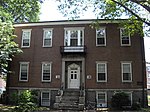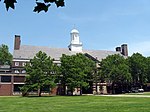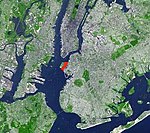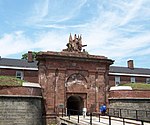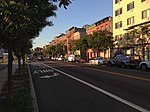School of Practice
Cultural history of the American Civil WarDefunct United States military academiesDefunct boys' schools in the United StatesDefunct schools in New York (state)Defunct schools of the performing arts in the United States

The School of Practice (School of Practice for U.S.A. Field Musicians) at Fort Columbus, Governors Island, in New York Harbor was the United States Army's institute for musical training before and during the American Civil War. Much of the historical documentation of the School comes from Ten Years in the Ranks, U.S. Army, a book written by Augustus Meyers after enlisting at age twelve in the 1850s. The first part deals with the School of Practice. The official training guide, adopted by the War Department, was George G. Bruce's The Drummers and Fife Guide, which was used until the end of the Civil War.
Excerpt from the Wikipedia article School of Practice (License: CC BY-SA 3.0, Authors, Images).School of Practice
Barry Road, New York Manhattan
Geographical coordinates (GPS) Address Nearby Places Show on map
Geographical coordinates (GPS)
| Latitude | Longitude |
|---|---|
| N 40.688055555556 ° | E -74.015277777778 ° |
Address
Barry Road 298
10004 New York, Manhattan
New York, United States
Open on Google Maps

